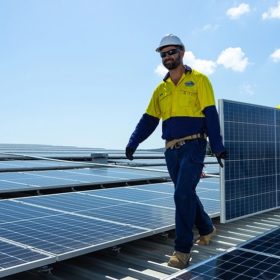Optimizing off-grid PV systems for different design criteria
A new report by IEA PVPS Task 18 provides a blueprint guide on how to conduct feasibility studies for off-grid and edge-of-grid power systems. The optimal system size and specifications vary depending on the client’s priorities. The desired project outcomes can be identified using pure financial analysis (NPV, IRR) or additionally taking environmental performance into account.
Pumped hydro key to meeting storage demand
Pumped hydro energy storage can be readily scaled to any required storage capacity at a known and affordable cost.
Bangladesh seeking partners to build solar power plants
The Bangladesh Power Development Board (BPDB) is seeking international partners to build three PV plants, with 77.6 MW of capacity in total, in different parts of the country.
Australia’s top 10 solar panel, inverter manufacturers
Sunwiz has revealed the leading rooftop solar and inverter manufacturers in Australia for 2022.
Australian scientists unveil method to produce hydrogen straight from ocean
University of Adelaide researchers and their international partners have successfully used seawater with no pre-treatment to produce green hydrogen. They did this by introducing an acid layer over the catalysts in situ.
Bangladesh offers PPA for 68 MW of solar at $0.102/kWh
The Bangladesh Power Development Board (BPDB) has agreed to buy solar electricity from a 68 MW facility that is now under construction in the country’s Sirajganj district, as part of a new state plan to buy cheap power.
How low-light solar cells can decarbonize your home
With the latest generation of household devices increasingly connected and internet-of-things (IoT)-enabled, dye-sensitized solar cells can finally realize their latent promise and help reduce the carbon footprint of billions of manufactured goods.
Battery energy storage in 2022
Battery swapping, solid-state batteries, second-life batteries, evolution from lithium to novel chemistries, and Cloud-based battery management system were the key trends in battery energy storage during the year.
Making the switch to a low-carbon economy
The shift to a low-carbon economy offers both a significant opportunity and a tremendous challenge.
Sembcorp to deploy more than 400 MW of PV at coal facility in Bangladesh
Singapore’s Sembcorp plans to install several solar plants near 1.4 GW of coal power capacity that developers are now building in Bangladesh.















